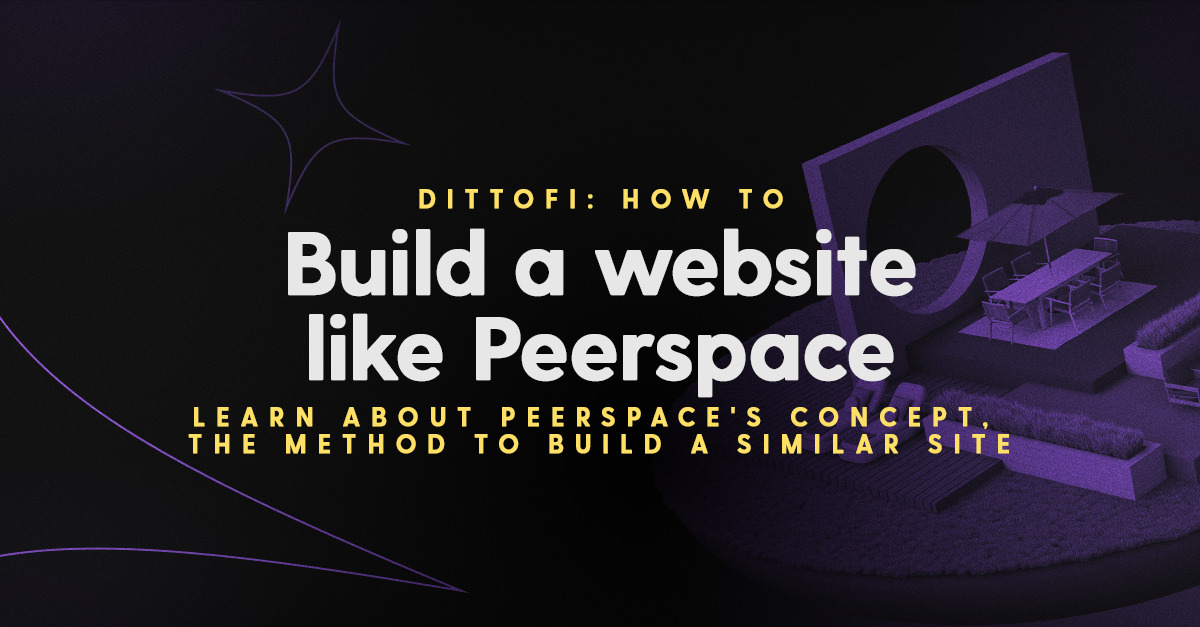PeerSpace is the Airbnb of the events world. The platform connects property owners with people looking to rent meeting rooms, event venues, creative studios, and unique spaces for short-term use.
But how did PeerSpace become a $700M+ company? And how can you build a website like PeerSpace?
In this article we cover everything that you need to know about how to build a website like PeerSpace, including:
- How PeerSpace found their marketplace idea
- Feature descriptions, screenshot and video demo of the PeerSpace MVP
- How PeerSpace onboarded their first users
- A video of PeerSpace’s original fundraising pitch
- And details of the PeerSpace business model
First up, let’s take a look at what PeerSpace actually is.
What is PeerSpace?
PeerSpace is a peer to peer (p2p) marketplace for for short-term rental spaces. In other words, it is an online marketplace that connects individuals looking for a venue to host a private or social event with property owners who are looking to rent out their underutilizes space. Think of it as Airbnb for events, where property owners can monetize their unused spaces by renting them to businesses, freelancers, or creatives looking for unique venues.
The PeerSpace platform acts like a middleman, connecting and facilitating transactions between property owners and renters. Then, in the end, the platform earns its revenue by charging a commission (or take rate) on each transaction that takes place on their platform.
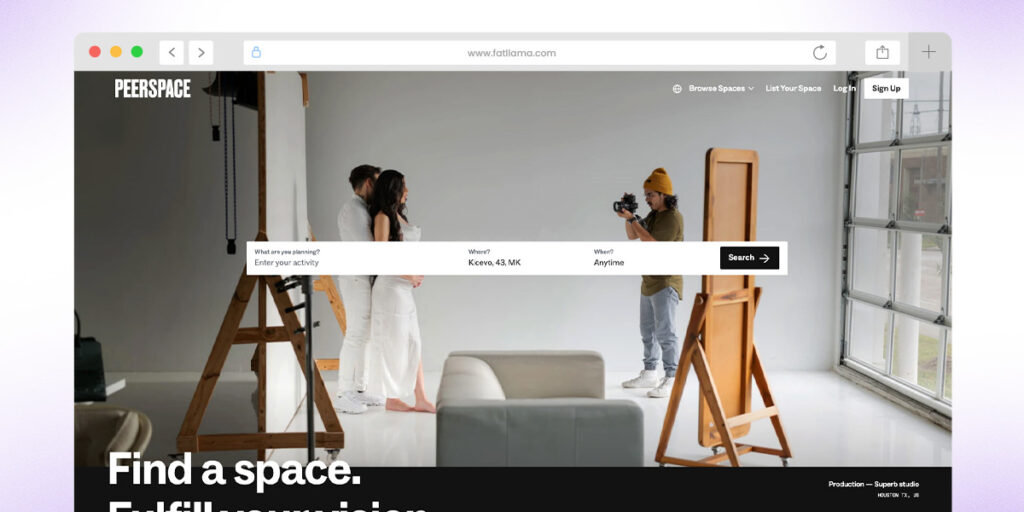
“If you’ve ever been to one of those conferences in the basement of a big hotel chain, you know it’s a place where you can’t wait to get out of there. The major difference with Peerspace is that our guests are really looking forward to getting to the space and staying there.” – Rony Chammas, PeerSpace Co-Founder
How to build a website like PeerSpace
There are three main ways to build a website like PeerSpace: custom code, specialist marketplace technologies and traditional no-code platforms. Each of these options has their pros and cons, peerspace customer service number, which we go through in our article on how to choose your marketplace tech stack.
You can use our hybrid no-code platform, Dittofi, to build a website like PeerSpace. We show how below.
PeerSpace’s success began with solving a real-world problem.
However, there is a lot more to building a successful marketplace than just getting the platform coded up. In fact, at their 3 year anniversary, the founders of PeerSpace explained that they had taken the following steps to build their marketplace:
- Finding a problem to solve
- Building their marketplace MVP
- Onboarding supply and demand
- Raising capital (the LAUNCH festival)
- Scaling from Seed to Series A
Let’s take a look at exactly how PeerSpace went through these different stages of marketplace development as two non-technical founders.
How PeerSpace found a problem to solve
The correct way to start a business is to begin by trying to solve a problem for your clients.
PeerSpace is a really good business and therefore it is unsurprising that the founding story begins when Rony Chammas tried to solve a problem for himself.
The story goes like this.
While an MBA student in Manhattan, Rony Chammas was consulting for a startup; however, like many startups, they often found it hard to find a decent location to meet as a team. Oftentimes they would be camped around a small table at a coworking space, sitting in a windowless conference room or borrowing space from the business school. In these poor working environments the startup’s productivity and creativity suffered. Rony therefore took the initiative to organize a meeting in an art gallery which was not in use for most of the week.
Rony documents that in the art gallery, the team was positively impacted by their environment. There was an electric energy, better ideas and the team did more work in a few hours than they had done in weeks. After the meeting, the team was excited to meet again however, Rony struggled to locate another unique meeting space. Rony found that there were very limited options and that scheduling a time and place required a relentless back and forth with the property owner.
Noticing that there was no product in the world that could deliver easy access to short term spaces, the idea for PeerSpace was born. From there Rony decided to team up with Matt Bendett to found PeerSpace in 2013.
“We built this marketplace with the intention of lighting up all the dark space that is in our cities. A lot of these spaces are amazing locations that you wouldn’t have known are in existence and open to rent. But through Peerspace, we made that possible.” – Rony Chammas.
How PeerSpace built their marketplace MVP
Version 1 of PeerSpace was a mobile application that had a very contained set of functionality. In this section we cover peerspace customer service number, feature descriptions and screenshots of the PeerSpace MVP. You can see a video demo of the PeerSpace MVP in the next section.
Single sign on or skip and start browsing
The user onboarding experience begins with the option to sign up with Linkedin and Facebook single sign on. Alternatively users are able to skip the login stage and start browsing immediately.
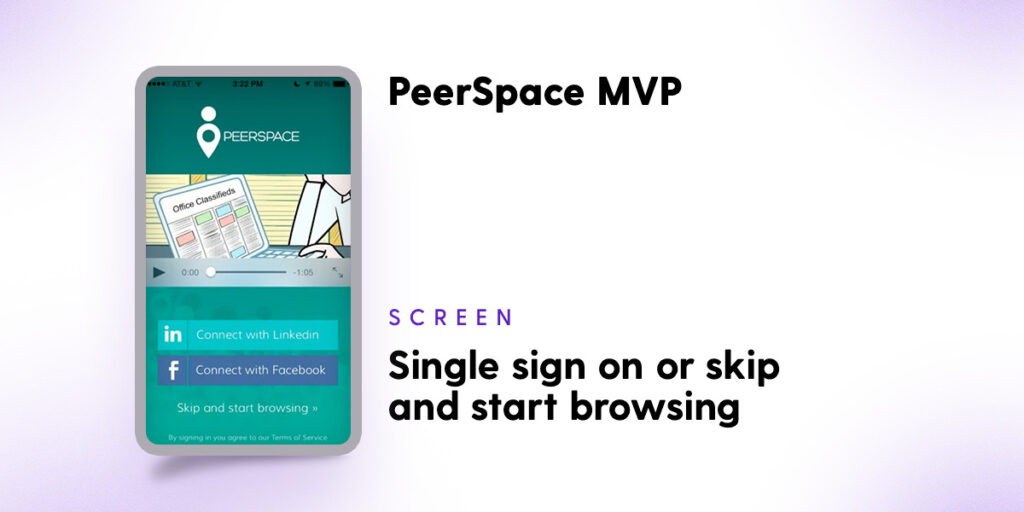
Routing pages
Once the user has signed in, both property owners and property managers are immediately directed to the listings page of the app. From here, the user can see a list of all the properties that are listed on the site.
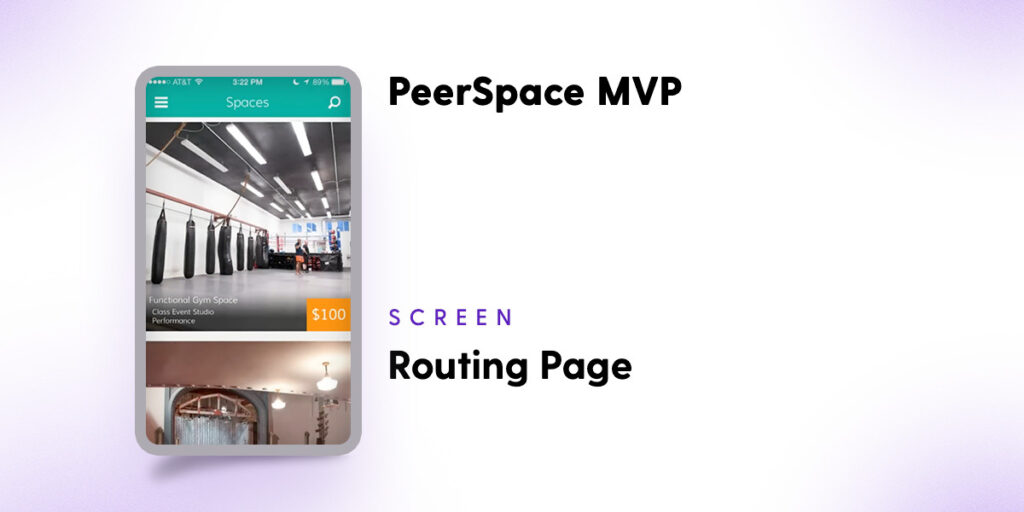
Slide out navigation menu
Using the slide out menu, property owners can select to “Add A Space”. This allows them to add their property listings to their marketplace.
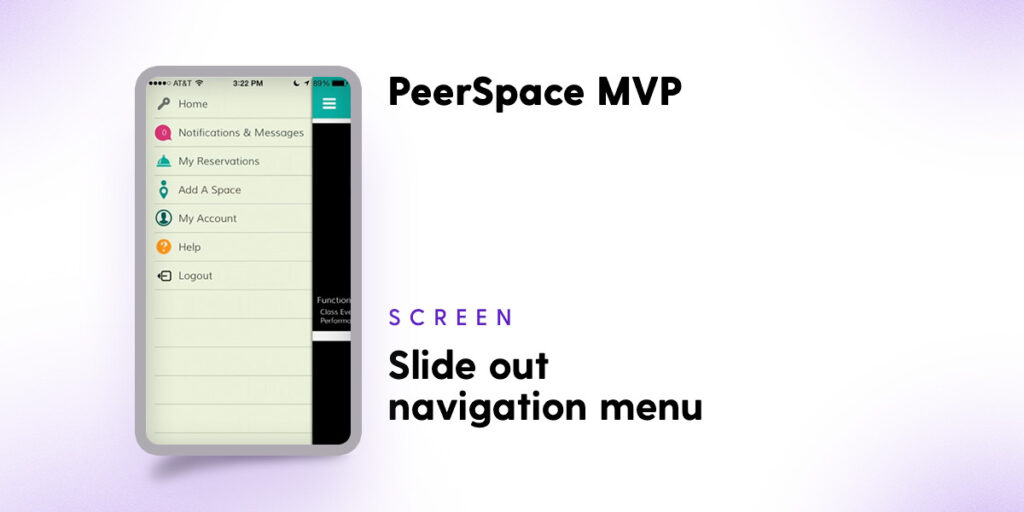
Sell side onboarding forms
Probably the best part of the PeerSpace MVP is in their incredibly simple onboarding forms. These allow property owners who want to list their space to:
- Give their space a catchy title
- Select how their space can be used (users can set multiple ways that their space can be used)
- Choose amenities that can be used within their property e.g. Tables, Chairs, Projectors and so on.
- Use free text fields to describe the space and its features
- List special rules and requirements for the space
- Set the location of their space
- Set a maximum number of guests
- Set the availability of the space
- Set pricing such as hourly, daily and weekly rates
- Upload photos to display the listing
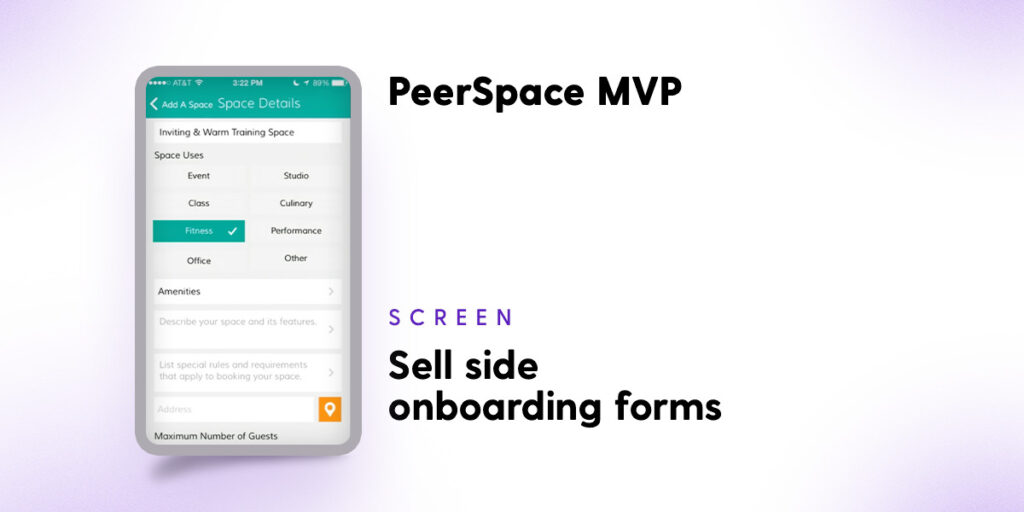
After a property manager uploaded the image, PeerSpace founders then had to find someone to rent the space. We will get to how they did this below.
User accounts page
Users can be both property owners and space renters. Each of these user types is able to create an account that includes their name, a photograph of themselves, company name, industry, address, website and description. Including user accounts pages is incredibly important for rental marketplaces since it helps to gain trust in the platform and promote transactions. PeerSpace founders allowed users to connect to already trusted networks, such as Facebook to the user profile.
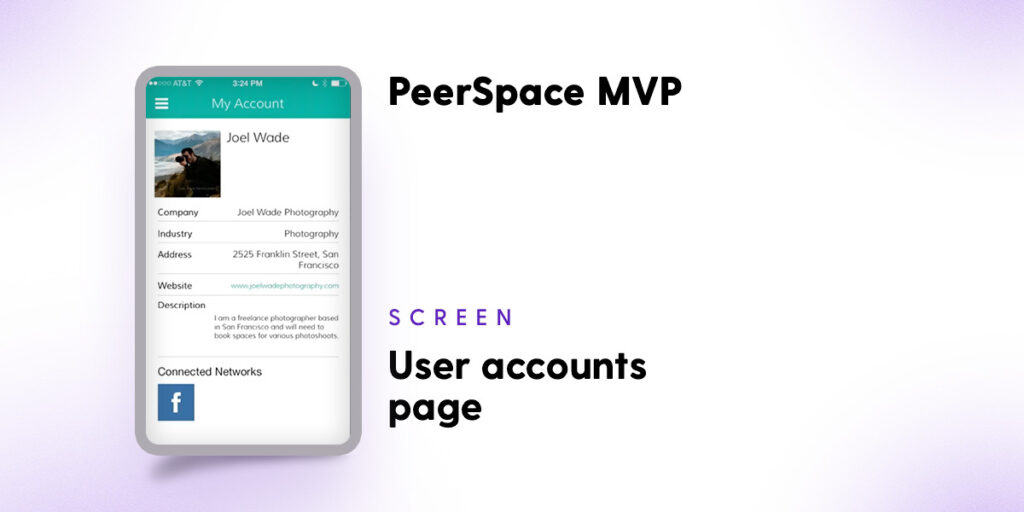
There are also separate pages for users to manage their account, for example change their password, update or remove billing information and to close their account down.
Search and navigation
Users are able to use the search button in order to filter for property listings based on location, space uses, number of guests and price. Notice that there is no option in the PeerSpace MVP for free text search.
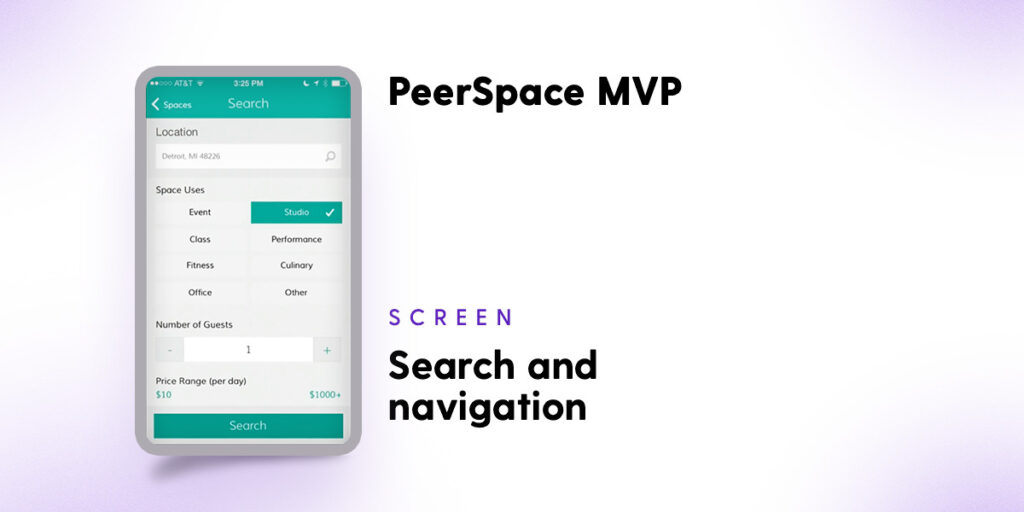
Listing details page
Once users have identified a property that they want to rent, they are able to tap on the property in order to bring up the details for the listing space. From here users are able to read more details about the property, “Message Hosts” or “Book Now”.
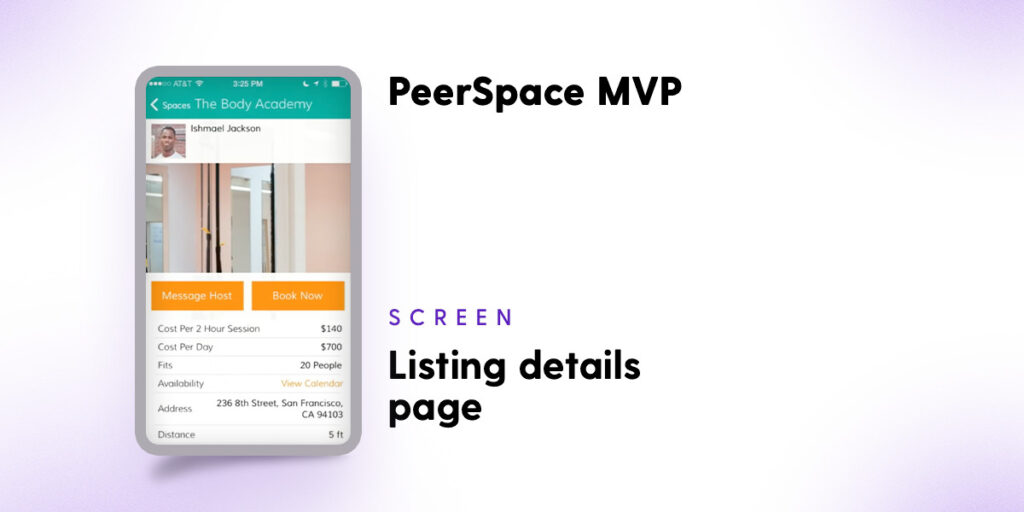
On platform messaging
Users are able to directly message hosts to help negotiate and facilitate transactions.
Payments
After the user has successfully selected the space that they want to rent, they are able to tap a selected payment method to make the transaction. They are then redirected to a “My Reservations” screen where they can see a list of their upcoming reservations.
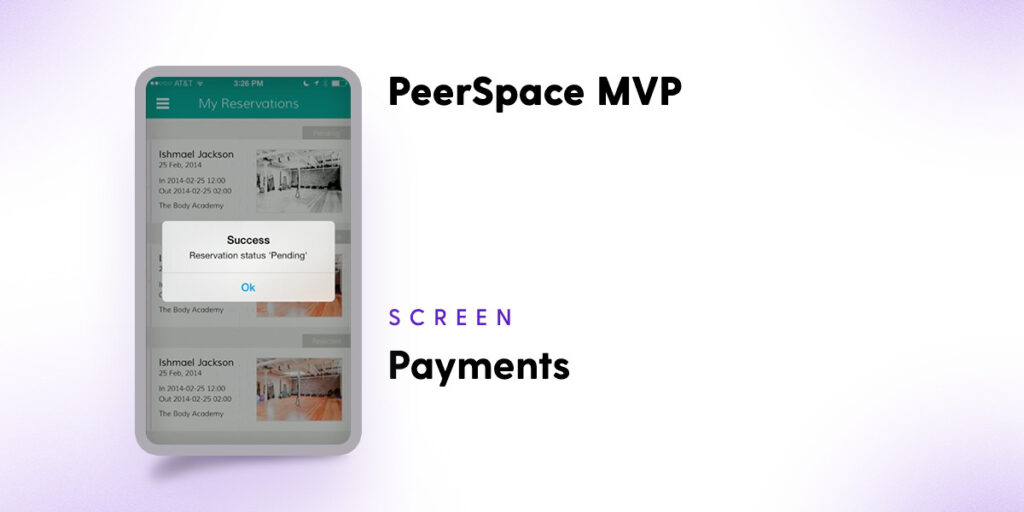
Upcoming reservations
After a booking has been made, the property owner receives a notification of an upcoming reservation and is able to either accept or decline the booking. The platform operator is also able to either accept or cancel the reservation. This is all part of what is known as a two-sided marketplace transaction flow.
General liability insurance
Each property that was listed on PeerSpace was backed with general liability insurance. This protected PeerSpace against potential damages that were done to property.
Two-sided reviews
After a booking had been completed, both property owners and renters were able to review the opposite party in the transaction. This helped improve trust in the marketplace.
For more information on how to build a marketplace MVP, check out our article, how to build an online marketplace MVP fast.
How PeerSpace onboarded their first users
When it comes to getting users, all marketplaces have the same problem. This is known as the marketplace chicken and egg problem. The problem is, without supply there is no incentive for demand to come to the website and without demand, there is no incentive for supply to come to the marketplace.
In PeerSpace’s case, they needed to find property owners to list their spaces (the supply) and people who wanted to rent out those spaces (the demand). To do this, Rony and Matt decided to focus initially on getting the supply on. They felt that there was such high demand that if they could find the supply of spaces, then the demand would naturally show up.
To get the supply onboard the two founders went door to door around San Francisco. They physically entered offices and asked receptionists about the spaces. Rony would show prospects pictures of other spaces on his phone, in order to convince other people to upload their properties. As Rony explains some people were hesitant, but many signed up. Their listings were then grouped into categories based on what they space could be used for.
After they had properties been listed, the founding pair started looking for people who wanted to rent their space. For example, under the category of fitness studios peerspace customer service number, the founders targeted personal trainers who might be interested in renting out the space. They posted ads on craigslist for photographers looking to rent out space and many more scrappy tactics like that.
For more examples of how marketplace solved their chicken and egg problem read, How to solve the chicken and egg problem.
Raising capital (the LAUNCH festival)
In 2014, PeerSpace took place in the LAUNCH festival where they publicly displayed their platform.
The video of PeerSpace’s LAUNCH festival pitch is below.
Rony Chamas notes that this is when PeerSpace really started to get attention from individual investors and media outlets. The founders raised $500,000 of seed capital and Forbes wrote a story about them which got so much traction that their website crashed.
From Seed to Series A
Once PeerSpace started gaining more attention, the platform started to attract a more diverse audience than initially anticipated. PeerSpace saw bookings coming in not only for meetings, but also for events and a variety of use cases from company off-sites, peerspace customer service number, weddings to studio film and TV productions. This rapid growth took them from their seed round of investment to their series A.
At this point their tech stack was barely holding up with the surge in customer demand. Many users were requesting a web app which would open their marketplace to new marketing and user acquisition channels to help grow faster.
To do this, Rony went on the capital raising trail again and was able to convince Foundation Capital to invest in his business. The VC aligned well with the founding team and was able to help them not only with a $1 million investment but also in deploying the capital correctly, hiring the correct heads and thinking strategically about how to grow their marketplace.
The company hired UX/UI specialists who reorganized the design system for the PeerSpace technology, a CTO called Jannie Johnson to help scale their technology and allocated the rest of the capital to user acquisition. The video below shows Rony Chamas announcing the capital raise on Fox Business News.
There is a lot of information online about how PeerSpace addressed design challenges and added new features to their marketplace as they grew. For more information on this read PeerSpace Design System which is a blog written by an early employee of PeerSpace.
PeerSpace Business Model
PeerSpace derives its revenue from two main sources;
- Commission Fees: PeerSpace charges a defined amount of commission from both the host and the renter off the total booking price for each confirmed booking.
- Concierge Services: PeerSpace also charges a commission for the concierge services provided to the renter in order to hold the event. This is a more hands-on service where PeerSpace will organize aspects of the event itself.
Looking for PeerSpace customer service? Contact PeerSpace customer service number for booking support or inquiries.
“PeerSpace facilitates short term access to wonderful locations.” – Rony Chammas
PeerSpace Value Proposition
PeerSpace offers different value propositions to the property managers and renters.
For the property manager: They get the option to generate passive revenue through their marketplace platform. The solution also comes with damage and liability coverage. Another option is that the host can look up the renter’s profile and review previous feedback given by other hosts before accepting or declining a booking. This gives the host control to choose who they let into their space. Lastly, PeerSpace offers a 24/7 customer care service by phone, email and chat.
For the renter: The main value proposition that PeerSpace offers to guests is easy access to a diverse range of locations that can be used for a whole range of reasons. PeerSpace makes it easy for renters to choose a location and rent it without having to get into a difficult back and forth. Furthermore, renters can also check reviews on properties and hosts. Lastly, PeerSpace also offers 24/7 customer care and a concierge service for high paying clients who want an entirely hands off experience and support choosing a location.
Both property owners and renters come to PeerSpace for different reasons however, they stick to the platform because of the diverse selection of properties, trust in the marketplace, liability coverage, concierge option and great customer care.
PeerSpace Competitors
In a previous article, we looked at PeerSpace competitors. This includes household names such as Giggster who target film and content creators looking for cinematic locations, Splacer who target creators looking for unique spaces and so on.
However, It’s interesting to note, that in the video broadcast of Rony Chamas announcing his Series A funding round on Fox Business news, the reporter lists out three PeerSpace competitors which did not get nearly as much traction as PeerSpace. These include: Storefront, Breather and LiquidSpace.
Let’s take a moment to see why these businesses never got as much traction as PeerSpace.
Storefront a PeerSpace Competitor
Storefont was founded in 2013. The company is a p2p marketplace for short term access to retail space. The platform targets entrepreneurs, small businesses, pop-up shops, brands looking to launch new products, or anyone in need of temporary retail space for events, promotions, or special occasions.
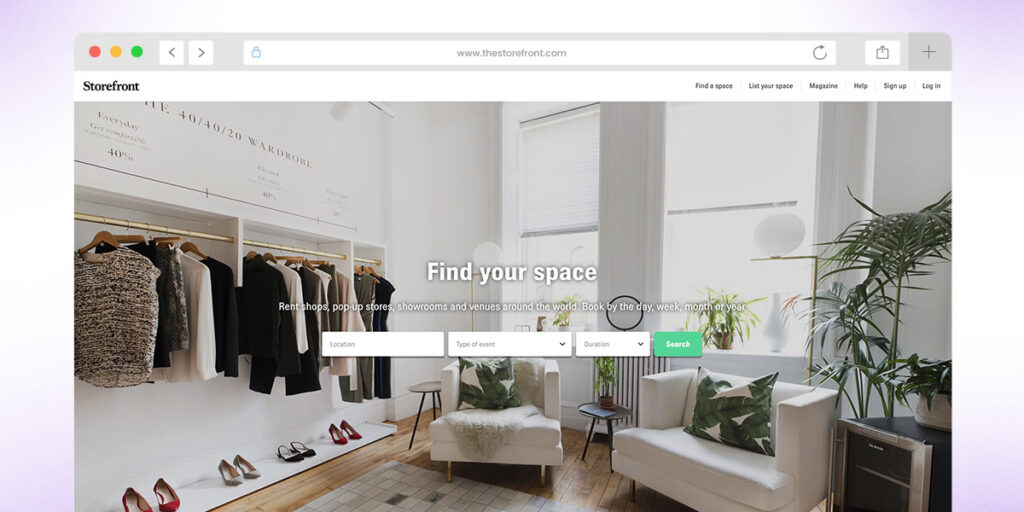
Breather a PeerSpace Competitor
Breather was founded in 2012. The company offers on demand workspace rentals.
Breather primarily targets professionals, businesses, and teams in need of flexible workspace solutions. This may include freelancers, remote workers, small businesses, startups, and corporate teams who require temporary office space, meeting rooms, or quiet workspaces on an as-needed basis.
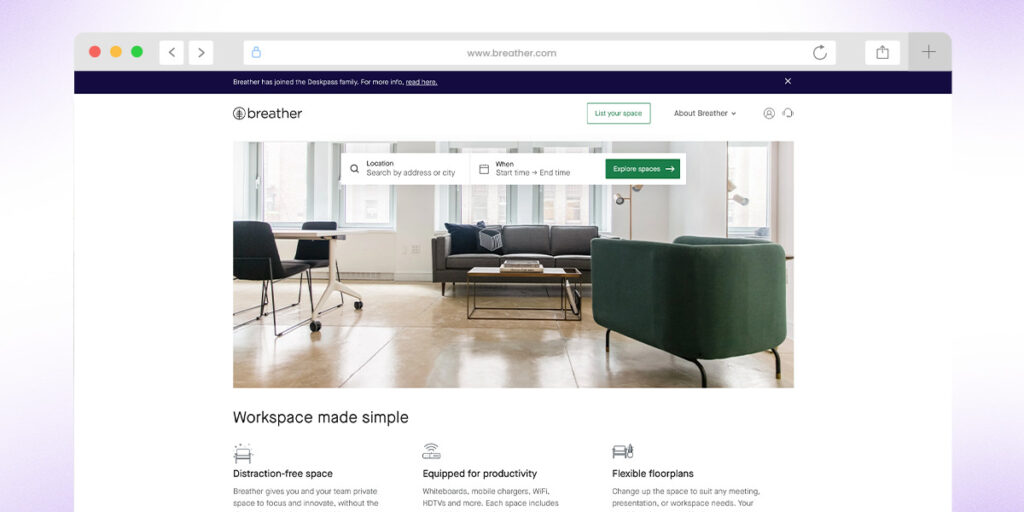
LiquidSpace a PeerSpace Competitor
LiquidSpace was founded in 2010. The platform connects individuals and businesses with flexible workplace solutions. The platform is a direct competitor to Breather in that it targets the same demographic of freelancers, remote workers, small businesses, startups and corporate teams.
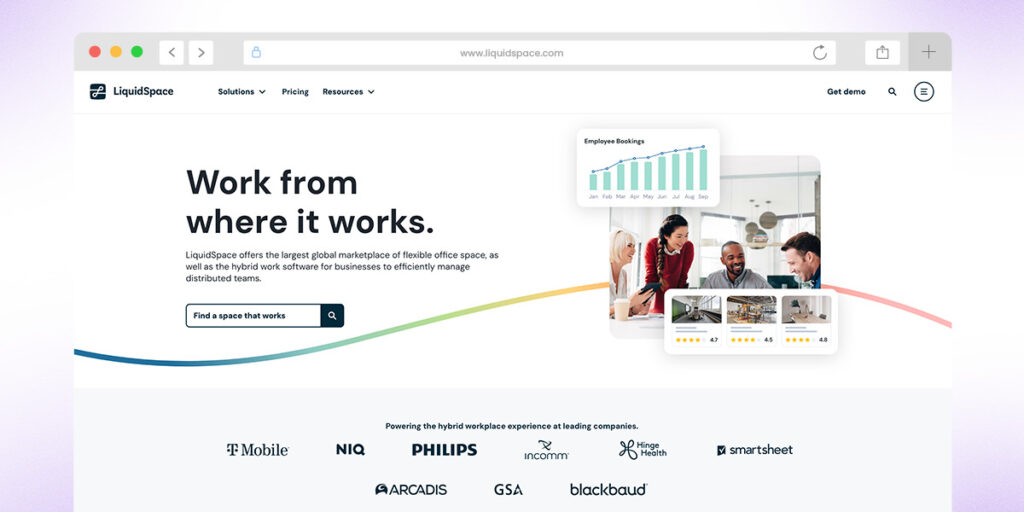
Conclusion: How to build a business like PeerSpace
Hopefully this article illustrates that there is a lot of effort that goes into building a website like PeerSpace.
The technical challenge of developing a website like PeerSpace is really only a tiny fraction of the challenge. With PeerSpace’s current valuation being at more than $700 million, it’s easy to see that with the massive challenge, there is also the potential for huge rewards.
There are many niche marketplace opportunities that you can focus on at the outset. Just be prepared to invest time and effort into the development of your marketplace.
- Luxury Event Venues – Exclusive, high-end rentals.
- Photography Studios – On-demand spaces for photographers.
- Pop-Up Retail Spaces – Short-term store rentals.
- Fitness Studios – Rentable gym spaces for trainers.
- Film Locations – Unique sets for video production.
As the famous saying from Paul Graham, founder of Y-Combinator goes, businesses don’t grow by themselves, they grow because founders make them grow.
If you would like to speak to anyone about building a website like PeerSpace, book a call with one of our marketplace specialists. Alternatively, you can sign up to Dittofi and check out some of our fully functional and entirely customizable marketplace templates that you can use to jumpstart your marketplace development today!=
And… if we don’t hear from you. Best of luck in your marketplace journey!
Become a Marketplace Insider
Join our inner circle for exclusive insights, coveted trade secrets, and unparalleled strategies – your journey to marketplace dominance begins here.

